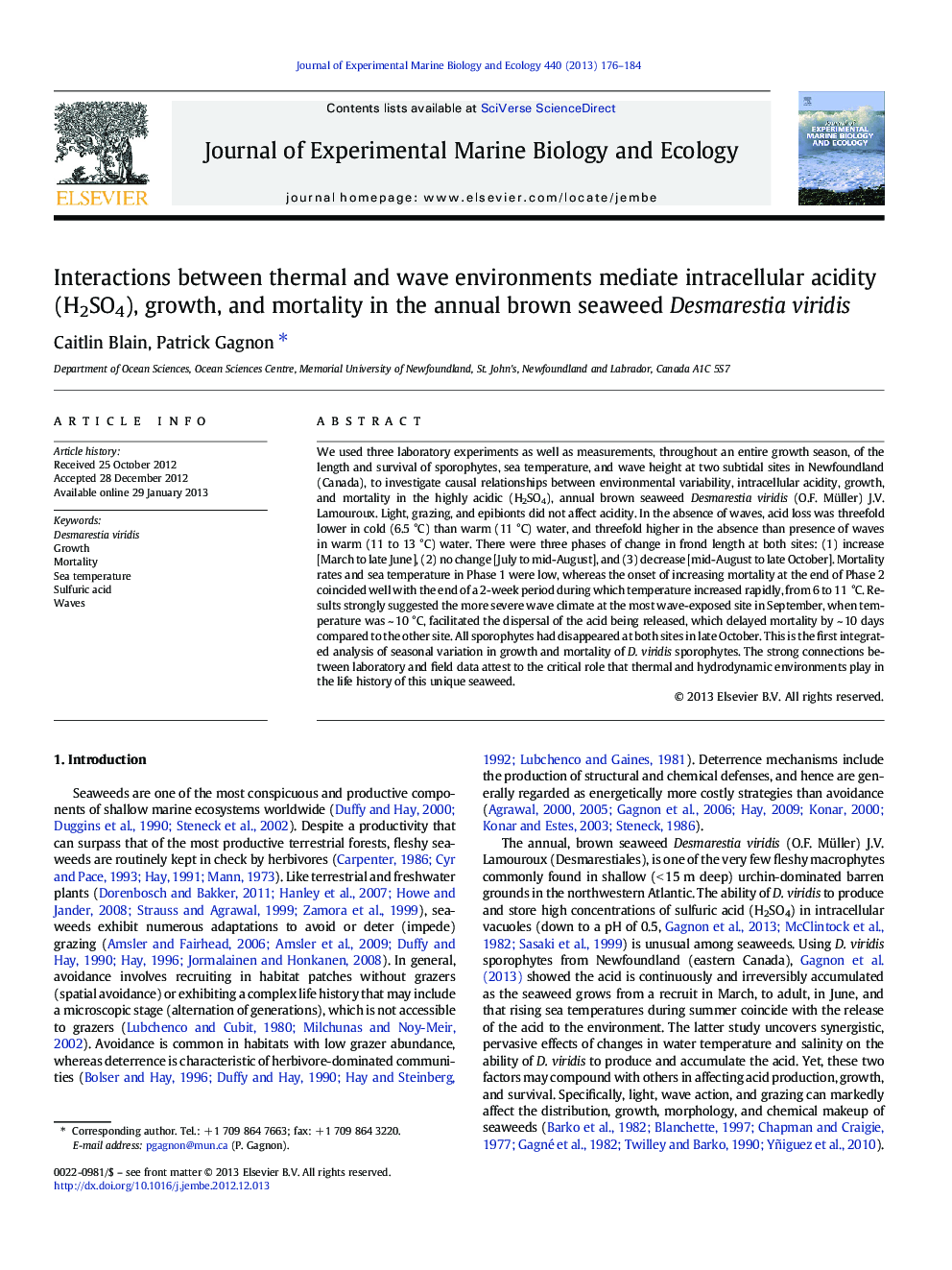| کد مقاله | کد نشریه | سال انتشار | مقاله انگلیسی | نسخه تمام متن |
|---|---|---|---|---|
| 4395816 | 1618435 | 2013 | 9 صفحه PDF | دانلود رایگان |

We used three laboratory experiments as well as measurements, throughout an entire growth season, of the length and survival of sporophytes, sea temperature, and wave height at two subtidal sites in Newfoundland (Canada), to investigate causal relationships between environmental variability, intracellular acidity, growth, and mortality in the highly acidic (H2SO4), annual brown seaweed Desmarestia viridis (O.F. Müller) J.V. Lamouroux. Light, grazing, and epibionts did not affect acidity. In the absence of waves, acid loss was threefold lower in cold (6.5 °C) than warm (11 °C) water, and threefold higher in the absence than presence of waves in warm (11 to 13 °C) water. There were three phases of change in frond length at both sites: (1) increase [March to late June], (2) no change [July to mid-August], and (3) decrease [mid-August to late October]. Mortality rates and sea temperature in Phase 1 were low, whereas the onset of increasing mortality at the end of Phase 2 coincided well with the end of a 2-week period during which temperature increased rapidly, from 6 to 11 °C. Results strongly suggested the more severe wave climate at the most wave-exposed site in September, when temperature was ~ 10 °C, facilitated the dispersal of the acid being released, which delayed mortality by ~ 10 days compared to the other site. All sporophytes had disappeared at both sites in late October. This is the first integrated analysis of seasonal variation in growth and mortality of D. viridis sporophytes. The strong connections between laboratory and field data attest to the critical role that thermal and hydrodynamic environments play in the life history of this unique seaweed.
► We studied controls of intracellular acidity in the seaweed Desmarestia viridis.
► Effects of water temperature, light, waves, grazing, and epibionts were tested.
► Light, grazing, and epibionts did not affect acidity.
► Temperature and waves had strong synergistic effects on acidity.
► Growth and survival at two sites mirrored seasonal shifts in temperature and waves.
Journal: Journal of Experimental Marine Biology and Ecology - Volume 440, February 2013, Pages 176–184